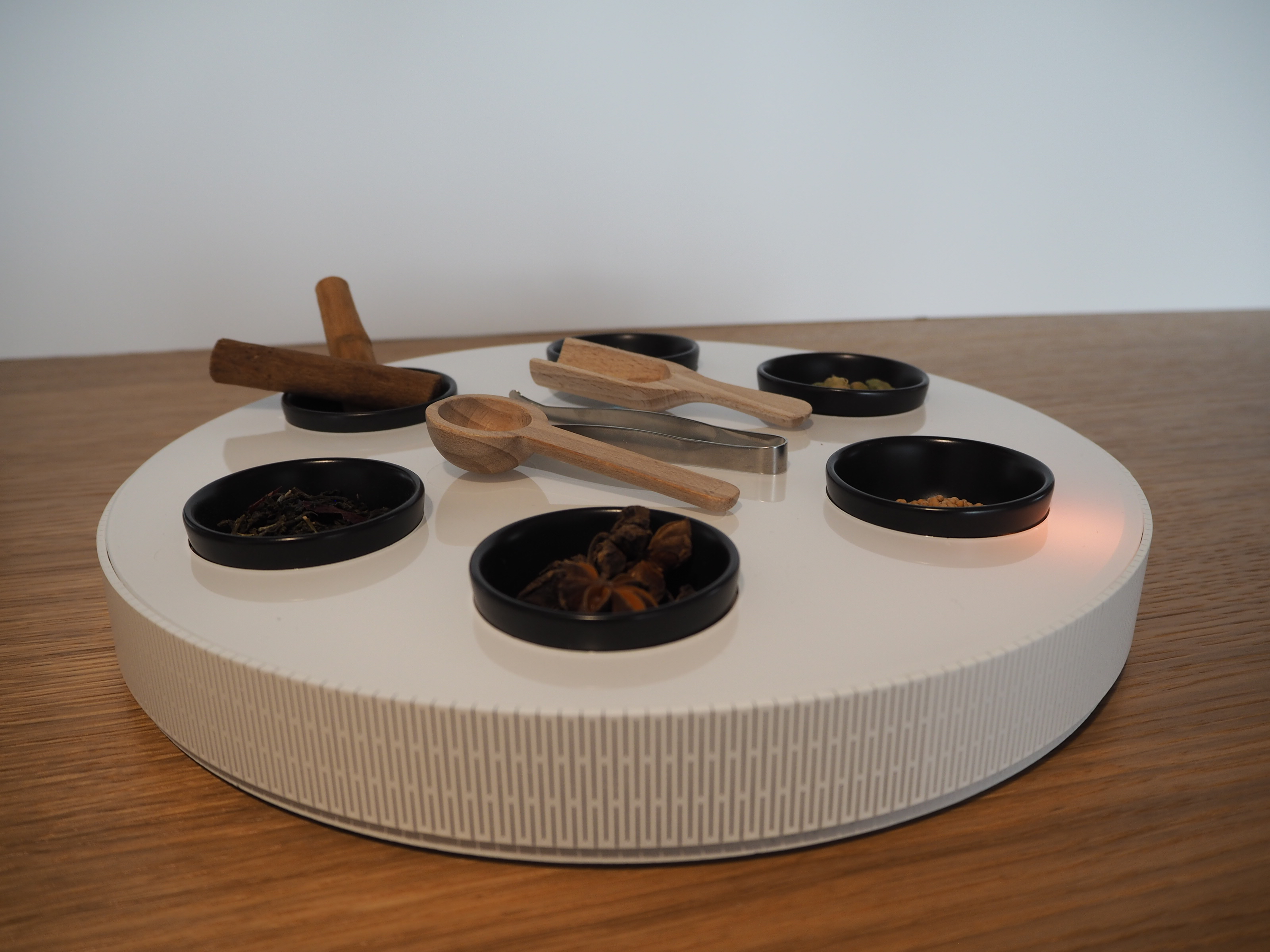With the coming of IoT devices which can be integrated into our everyday lives and homes, our devices are becoming more and more connected to and with each other. Products are moving away from product – service systems towards more advanced ecologies. Interacting with one device can have consequences for other devices as well (for example the multiple device control from Phillips Hue [1]). The 1 person - 1 product interaction gets lost, which creates a new array of challenges for designers. One of them is to give people insights in how they can interact with this network, instead of having to control each device separately. In order to explore this assumption, Maser offers the user 2 control mechanisms: one for the lights and one for the audio. Instead of focussing on the design of an application which would allow you to control the network of products, Maser focuses on rich interaction [2], since we believe that the richness and affordances we experience with analogue products should not be lost in the future. Starting from this approach, the controllers of Maser are designed as hand fitted artefacts. By inserting a personal token, the user unlocks the device. For the music controller the tokens means access to the user’s music library. Once the token has been inserted the user can scroll through their library, select the music they want to play, and adjust the volume. For the light controller, the user can perform the same action of inserting the token, allowing them the adjust the colour and brightness of the lights. Besides using the controllers separately, the user can click the controllers together, indicating that they want to control the light and music as a connected system. The controller at the left becomes the dominant controller, indicating whether the music adapts to the light settings or vice versa. By clicking the controllers together, the unnecessary switches disappear and new ones appear mechanically, resulting in new action possibilities for the user which are relevant for controlling the connected system. The design of Maser allows for growth and flexibility, as users can connect an infinite combination of controllers in different ways.
- Team Selim Haase | Sacha Prudon | Joep van de Ven | Rosa van Koningsbruggen
- [1] Frens, J. (2017). Designing for embodied and rich interaction in home IoT. In Proceedings of DeSForM 2017. InTech. [2] Frens, J.W. (2006). Designing for Rich Interaction: Integrating Form, Interaction, and Function. Unpublished Doctoral Dissertation, Eindhoven University of Technology, Eindhoven, the Netherlands. [3] Philips Lighting B.V. 2017. Meet Hue, Personal Wireless Lighting. Retrieved December 11, 2018, from http://www.meethue.com/






